It’s true that new content really is hard to find on the web today – most of it is regurgitated, and in this case, regurgitated violently…
You know how I felt regarding the title of “Green roofs may be a source of pollution” for a recent article in Planet Earth Online from my November 14 post “Green roofs may be a source of pollution” – Over Simplification of a Study Misunderstood or Grievous Offense?
Today I heard back from the Media & Public Engagement Manager of Natural Environment Research Council (NERC), who publishes Planet Earth Online, and after review they changed the title from “Green roofs may be a source of pollution” to: “Pollution accumulated in green roof soils could contaminate water” and some of Dr. Andrew Speak’s comments were amended as well.
While initially I did not add my own comments to the online article, but chose to contact the editors directly, today I did. You can see them here along with the others. While I appreciate NERC’s consideration and find the new article title better, it still only tells half of the story. Here is my second post and point at issue that I shared at Planet Earth Online but hasn’t yet been approved:
“Perhaps a more accurate (but less newsworthy) read would be “Just like at grade, pollution accumulated in green roof soils could contaminate water.”
The bottom line is that soils found anywhere can accumulate and bind pollution, and under the right conditions leach them. First we have to stop the sources of the pollution, and then see how to ameliorate the accumulations – at grade and rooftop level. But greenroof soils pose no greater threat to humankind than those found elsewhere, and in fact, greenroofs do capture and cleanse other types of pollution + manage stormwater + reduce the urban heat island effect + offer flora and fauna habitat + offer the potential for food production + relate to biophilia and horticultural therapy, plus, plus, plus.” ~ Linda Velazquez
Although less inflammatory, the new title still sounds like greenroofs per se could be potentially hazardous.
Have you read the latest regurgitated piece online with the moronic title “Do Green Roofs Do more Harm than Good?” from Sourceable.net? I should have left the term “Grievous Offense” for this one!
Of course, it references the same Dr. Andrew Speak (lead author) study published in the journal Environmental Pollution, but I’m assuming that its author picked up on it from either Planet Earth Online of November 11, 2013 or companion site’s Phys.org of of November 12, 2013 (which didn’t change its title): Even after referring to Dr. Speak’s study of 40+ year-old greenroofs and the fact that modern greenroofs would not contain such large amounts of the toxic metal found, it still states:
“The paper nonetheless points to green roofs being a quid pro quo for the environment as a whole, with a reduction in air pollution achieved at the expense of the quality of water runoff. The team has offered a number of recommendations for preventing green roofs from compromising water quality in urban settings.” ~ Sourceable
This new article even had the audacity to include a photo from Greenroofs.com – from Dr. Speak’s September, 2013 Guest Feature Article “Green Roofs and Air Pollution in the UK” but clearly its author didn’t stop to read it.
And just posted late this evening on Green Building Press is “Green roofs may be a mixed blessing” – at least its title offers a mixed bag of potential – but it comes regurgitated directly via Sourceable, too:
After referring to some of greenroofs’ virtues, here’s one of their choice observations:
“A new study by a team of scientists in the UK, however, claims green roofs may simply be passing the pollution buck from one environmental sphere to another.” ~ Green Building Press
If the pollutants are bound on the vegetated roofs, then the scientific reasoning could actually be correct, but again, this could pertain to any receiving body located anywhere. Our implementation of the living architecture of greenroofs should not be at issue here – man’s creation of pollution should be. More study of the long term effects of pollutants in soils is definitely needed, and media outlets need to examine their contributor’s research and writing skills, too. Look up “extrapolation” and “taken out of context,” for example.
(Maybe it’s true that you can’t believe everything you read on the Internet…)
Greenroofs compromising water quality in urban settings? Do greenroofs do more harm than good?
Just you see – next it will be “Night of the Living Roof” or “Attack of the Killer Greenroofs!”
Ugh.
~ Linda V.
 Greenroofs.comConnecting the Planet + Living Architecture
Greenroofs.comConnecting the Planet + Living Architecture
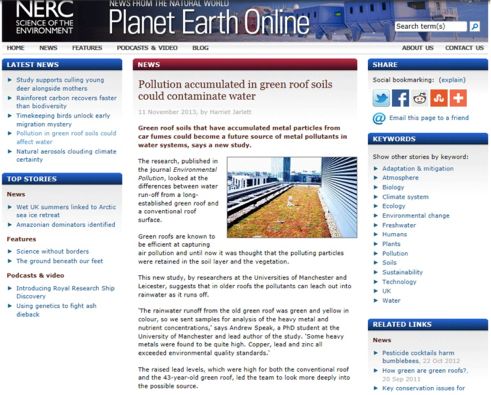
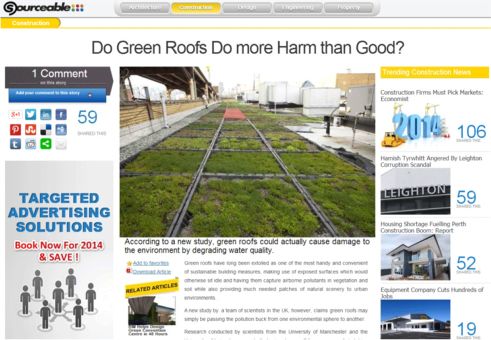
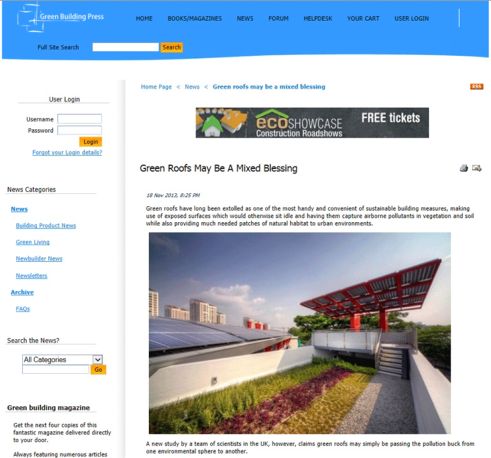


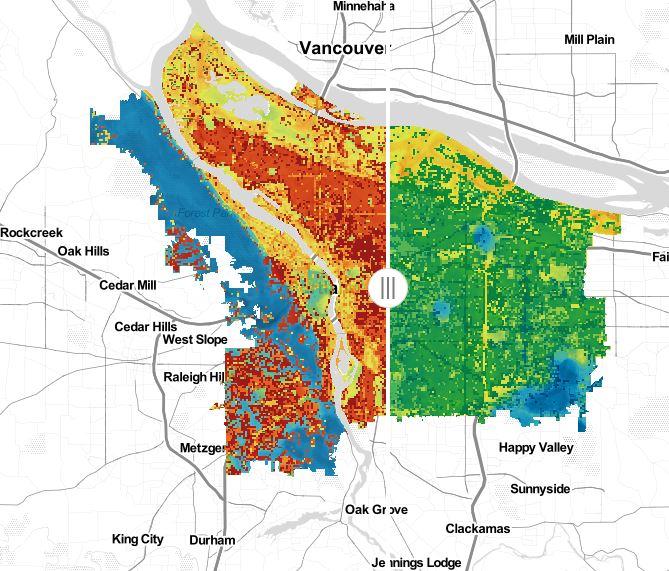
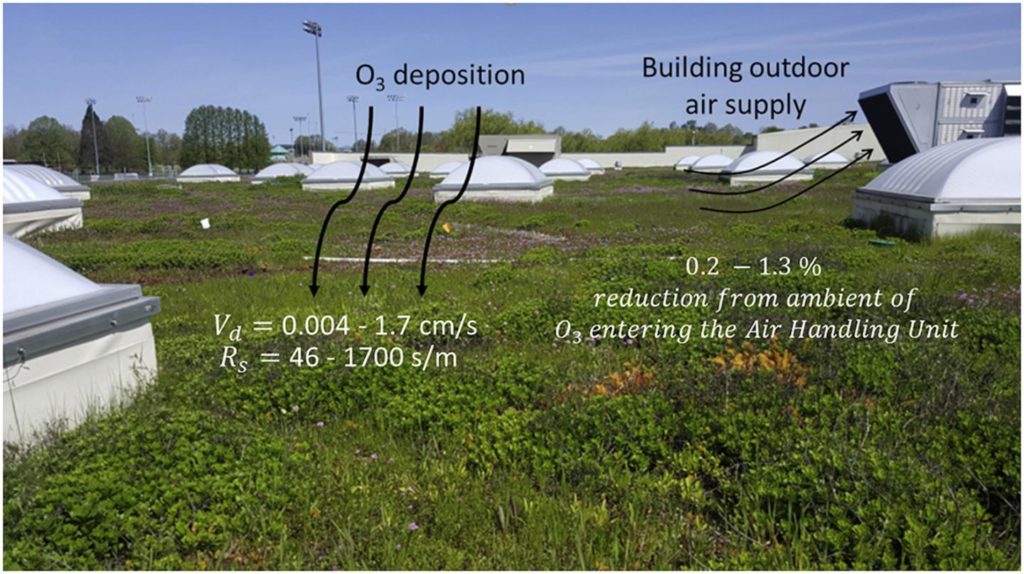
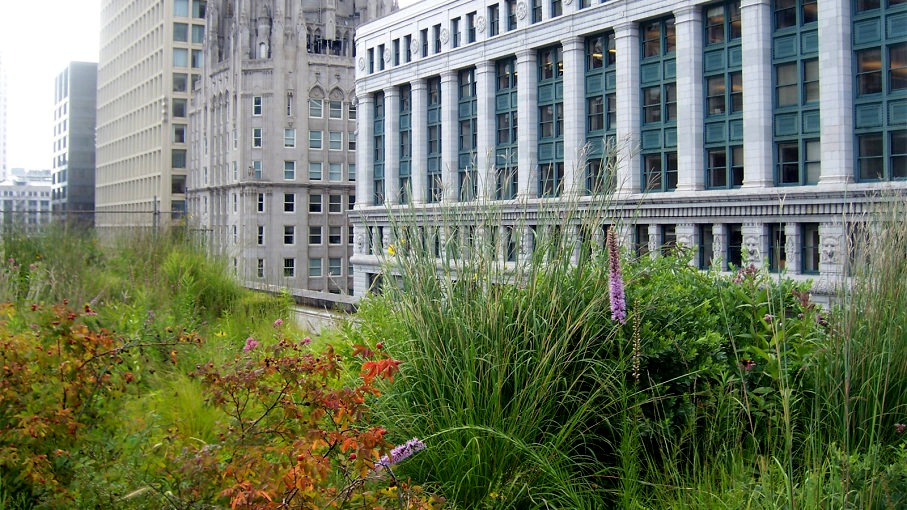




Robyn Simcock
Why not balance this article with ‘Metal roof – runoff makes harbour toxic’?
Runoff from copper or unpainted galvanised steel roofs/guttering/downpipes contains elevated levels of Copper and zinc. Monitoring of sediments in Auckland’s Waitemata harbour show levels of these metals continue to increase, and exceed critical levels in some areas, particularly estuary areas receiving runoff from industrial areas. Modelling shows the main contributor of Zinc are galvanised iron roofs (which are extensive in industrial areas). Studies of copper roofs show they contribute dissolved an particulate coper, but are only one of the sources. Copper is widely used as an anti-foulant and sediment concentrations around marinas are very high. Shellfish are particularly senstive to Zinc and Copper.
PS Waitemata is Maori (indigenous people of NZ) for ‘Bay of Sparkling water’).